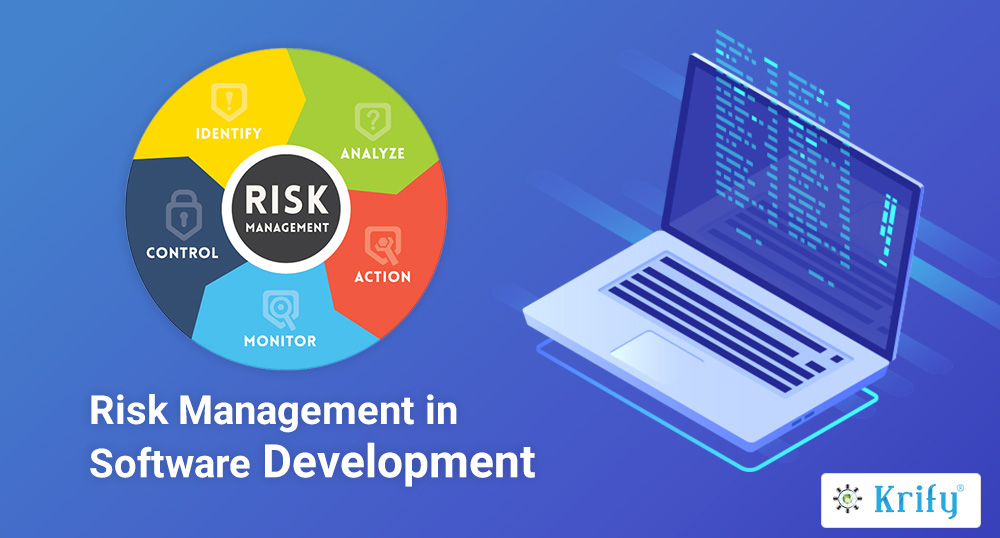Every mobile app development project involves a certain risk. Software development is an activity that uses a variety of technologies advancements and requires high levels of knowledge. Due to these factors, every software development project contains elements of uncertainty. This is known as Project Risk. Often, the risks are the result of project team mistakes, planning errors, failures in-process and sudden changes as product evolve. Risk management involves identifying, analyzing, and then mitigating or controlling the risk.
Types of Software Development Risk
Basing on the nature of the projects, these risks can change. But we can categorize these risks into five.
- Budget Risk: Budget risk is the most common risk in software development and it is obviously interrelated to other issues in the software development lifecycle. Some of them are:
- Wrong Budget Estimation
- Cost overruns
- Project scope expansion
- Knowledge Risks: Transfer of information is imperfect is known as Knowledge risk. The process of relearning results in additional labour, time and resources.
- Operational Risks: These risks of loss due to inappropriate process implementation failed system or some external results risk. Some of the causes of operational risks are:
- Failure to address priority conflicts
- Failure to resolve the responsibilities
- Insufficient resources
- No proper subject training
- No resource planning
- No communication in the team
- Schedule Risks: Product delays are very common risks in software development. Schedule risks are typically the result of poor planning, unrealistic timelines and the inability to adapt to change product requirements. Some other reasons are:
- Wrong time estimation
- Resources are not tracked properly
- Failure to identify the complex functionalities and time required to develop those functionalities
- Unexpected projects scope expansions.
- Personnel Risks: Personnel risk is the chance of losing or the absence of project team members. Even for a short period, the personnel risk can cause delays and errors and miscommunication.
- Productivity Risk: These type of risks are common in long projects, especially when deadlines and goals are long-term. This creates a lack of immediacy and urgency for deliverables.
- Programmatic Risks: These are the external risks behind the operational limits. These are all unknown risks are outside the control of the program. These external events can be:
- Running out of the fund
- Market development
- Changing customer product strategy and priority
- Government rule changes
What are the solutions to the risks in Software development
For enterprises that work traditional methodologies such as waterfall, transitioning to agile software development can cause risks. There are several solutions for addressing the risk in software development. Here are some of the solutions to the risks in software development.
- Budget Risk Solution: Rolling wave plan is the method of project management designed to account for budget risk. Rolling wave planning mitigates budget risks as you do not have to waste time and resources re-planning which helps keep your project under budget, it’s crucial to create a budgeting plan that acknowledges the entire scope of the project.
- Personel, Knowledge Risks Solution: In squad-based development, teams co-locate, form together, share knowledge, conduct code reviews, and collectively work on a given project from start to end. They have the best capacity and open flow of knowledge, which helps address both the personnel and knowledge risks.
- Productivity Risk Solution: Sprints solve productivity risks of this type, achieving a demo version of the product within given deadlines. They serve to provide actionable goals and objectives to product teams and add a sense of the immediacy and short-term accomplishment. Sprints help mitigate complacency and maintain project velocity by dividing the work into smaller, manageable tasks.
- Time Risks Solution: Replicable, flexible processes manage these types of risks most effectively, dealing with common causes of time risks.
What are the 5 risk management steps involved in a risk management process?
A project manager or team member can manage risk on a daily basis, it’s one of the most important things one should do. If you know how to apply a systematic risk management process in 5 steps, then your project will run more smoothly.
All risk management processes follow the same fundamental steps, though they may use different buzzwords to describe them. All together these risk management process steps combine to deliver a simple and effective risk management process.
Step 1: Identify the risk – The project manager or team member need to recognise and describe the risks that affect your project. Teams actively use various techniques to identify project risks. For this, you need to start preparing your project risk register.
Step 2: Analyse the Risk – Once the risks are identified you need to determine the consequences of each risk and also try to understand the nature of the risk. So that you can know the potentiality to affect the project goals and objectives. Register all this information in the register.
Step 3: Evaluate or Rank the risk – Evaluate or rank the risk by defining the risk significance. This compound of likelihood and consequence enables making decisions on risk severity and treatment for the risk register.
Step 4: Treat the Risk – This is also known as risk Response Planning. During this step, you access your greatest ranked risks and set strategies to treat or modify these risks to attain acceptable risk levels. You develop risk mitigation strategies, preventive plans and contingency plans in this step and add risk treatment measures to the project risk register.
Step 5: Monitor and review the risk – In this step, by considering all these project risk registers and use it to monitor, track and review risks. By using all this, you can effectively de-risk your project. So that you can move much more confidently and effectively achieve your project goals. The risk management process also serves to fix problems when they occur because the team has envisioned those problems and developed plans to treat them.
Conclusion
Risk management is an extensive discipline and is a balance of risk and reward. Hence, it is crucial that the team analyses the requirements. It must also assess the risk for each one. In software, high risk often does not correspond with a high reward.
Krify is the top web and mobile app development company based in UK and India. We have a huge competency in developing web and mobile apps for various domains. Even we provide domain and hosting services to the startups. For more details please contact us.









